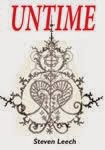Wilmington in the 19th century was situated, as it still is, in the nexus of other mid Atlantic cities. Because of its genteel Quaker nature and its relatively smaller size, it was unlike, by early 19th century standards, the teeming metropolises of New York City, Philadelphia and Baltimore. These three cities became the source for a sub genre of antebellum literature by at least four authors with approximate ties to nearby Wilmington: Edgar Allan Poe, George Lippard, Bayard Taylor, and most recently Walt Whitman, in an obscure and nearly lost early novel. Both Lippard and Taylor hailed from nearby Chester County, Pennsylvania, and Whitman lived his waning years in Camden, New Jersey where he died.

Our story, however, begins in Baltimore in the late 1820s with the brothers William Henry Leonard Poe and his younger brother Edgar. Estranged from one another throughout most of their youth, the Poe brothers, offsprings from the kind of rough urban life depicted in novels like Lippard's The Monks of Monk Hall and The Killers, Bayard Taylor's John Godfrey's Fortune, and Walt Whitman's The Life and Adventures of Jack Engle, acted as muses for one another. However, Leonard Poe died on August 1, 1831 at the age of 24, probably from tuberculosis. Examples of Leonard Poe's poetry are similar, if not exactly the same in some cases, to his younger brother Edgar's poem "Tamerlane," making it likely that both worked together, without rancor, on the same poems, though both wrote their own separate poems.
There is a striking parallel between Poe and Delaware author and poet John Lofland. Both, at an early age, were seriously involved romantically with women, Sallie Ann Mitchell in Lofland's case and Elmira Royster in Poe's case, and both Lofland and Poe were considered bad candidates for marriage by the parents of both women. The experience of rejection, and the forced nuptials of both Mitchell and Royster, proved traumatic for both Lofland and Poe and had the affect of influencing their later work and maybe bringing the two closer together.
In one of the few prose works to have survived by Leonard Poe entitled "The Pirate," he reflects the anger and tragedy of Elmira Royster's forced marriage by depicting the "pirate," named Edgar in the story, as an exile who can never return home because he had murdered his promised betrothal on her wedding day.
Both Poe brothers spent their short lives together in Baltimore, where in later years Edgar and John Lofland encountered one another. It's not hard to imagine the two of them sharing their experiences at being jilted by romantic attachments via intervening parents. And one gets a good sense of the seedy nature of urban life in Baltimore from Lofland's own account in his "Confessions of an Opium Eater."
The urban environment in cities of the early 19th century are similarly depicted in early novels by Lippard, Taylor and Whitman. They are populated with con men, scam artists, poseurs, vagrants, prostitutes, and orphans. The honest and gainfully employed are mechanics, shop keepers, printers, blacksmiths, with others like lawyers, bankers and real estate agents often operating on the precarious edge of legality. In Whitman's The Life and Adventures of Jack Engle, the villain is a lawyer out to deprive a young woman of her inheritance and to perpetuate the orphan status of Jack Engle. In Bayard Taylor's John Godfrey's Fortune, the New York City of the same vintage as Whitman's novel seems full of fakers, shaky entrepreneurs, and women forced into prostitution by callous con men. The same could be said of Lippard's The Monks of Monk Hall, which depicts a hotbed of the same sorts of characters, but on steroids, close to home in Philadelphia. In early 19th century Delaware author Robert Montgomery Bird's Sheppard Lee, we find the protagonist hopping from body to body in the city of Philadelphia in a metempsychotic frenzy searching for a way to get rich quick.
Wilmington seemed like a refuge in the midst of ferment in the embryonic megalopolis of New York, Philadelphia and Baltimore. In Delaware author John Biggs' novel Demigods, which occurs later in the 19th century turning into the 20th, the protagonist John Gault nearly gets swallowed up in Philadelphia's urban landscape, where he works for a while in the city's ship building yards. It is not until he moves to genteel Wilmington that he achieves any sort of success, first as a newspaper publisher and nearly so as a politician.
In real life, it wasn't until Delaware poet and author John Lofland moved to Wilmington from Baltimore and became clean and sober that he accomplished his most important and relevant literary work.
Not so with Poe. The intense urban environment in which Poe lived in Baltimore, Philadelphia and New York eventually proved to be too much. It was while attempting to make his way to Richmond, Virginia to be reunited with the widowed Elmira Royster, his sweetheart from his youth, that he got caught up in the nefarious election campaign practice of "cooping" in Baltimore, where men where rounded up, liquored up, and in a drunken state led from polling place to polling place to exchange votes for drinks, and then abandoned to the gutter, where Poe was eventually found. Poe had become a victim of an urban practice that could have easily fit into those depicted in Lippard's The Monks of Monk Hall, Taylor's John Godfrey's Fortune or Walt Whitman's The Life and Adventures of Jack Engle





